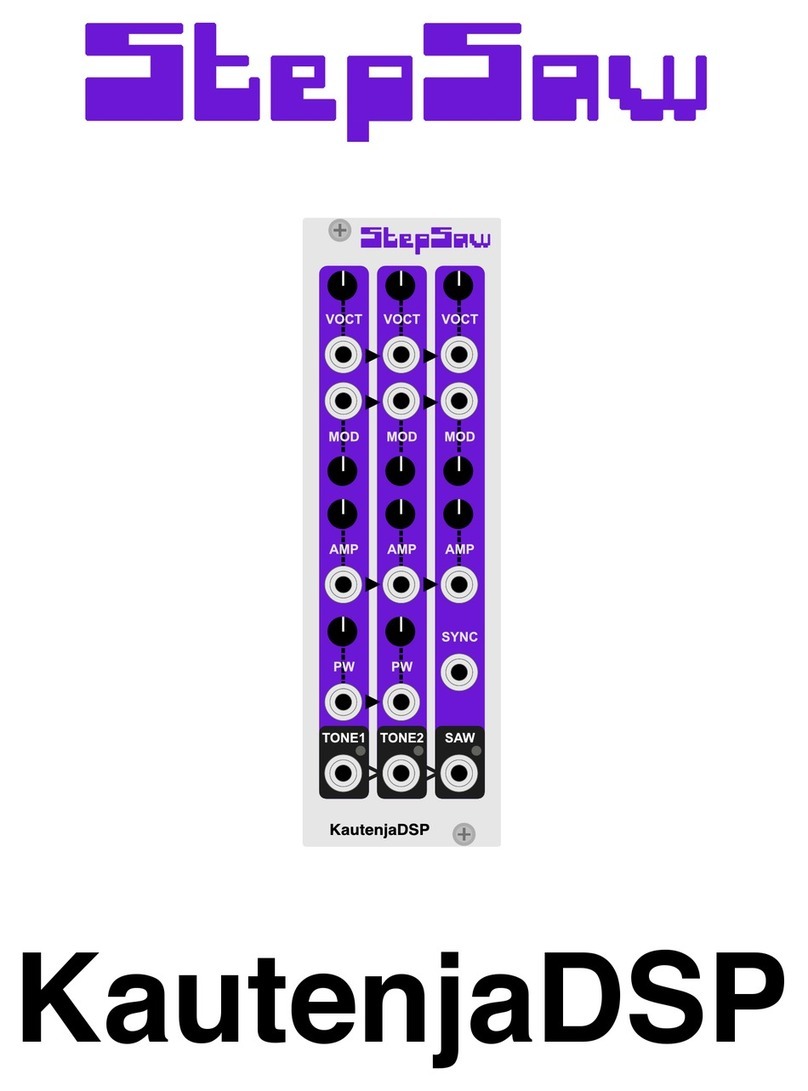
KautenjaDSP Mini Boss v2.0.0
•LFO Frequency Modulation
determines the amount of frequency modulation applied to the
operator by the global LFO ∈[0,7];
•LFO Amplitude Modulation
determines the amount of amplitude modulation applied to the
operator by the global LFO ∈[0,3];
•FM polarizes and attenuates inputs to the FM port;
•Multiplier
is an integer multiplier for the frequency of the operator. MUL ranges from 0to 15,
and multiplies the overall frequency, with the exception that 0results in multiplication by 1
2;
•Feedback
controls the amount of feedback for operator 1
∈
[0
,
7]. When an input is patched
to the FB input, feedback levels can be selected in increments of 1V; and
•Volume
controls the output volume level from the synthesizer as an unsigned 7-bit multiplier.
3 Envelope Generator Ports
Each envelope generator parameter has an associated input port. The CV to each port is
quantized uniformly from [
−
8
,
8]
V
continuous voltage to the discrete range of the associated
parameter. Control voltages are indicated by the LED lights on the slider for the associated
parameter. Positive (negative) voltages result in a green (red) light that increases in brightness
as the voltage increases in magnitude.
4 Voice Ports
•GATE
input goes high at 2
V
and triggers the envelope generator on the operator. Figure 1
illustrates how the envelope generator interprets
key on
and
key off
events in the gate
signal;
•RTRG
input goes high at 2
V
and re-triggers the envelope generator on the operator if the
gate is high;
•VOCT
input provides exponential control for the oscillator’s frequency offset from the base
frequency determined by the Frequency knob;
•FM
input allows for an external frequency modulation signal to be applied to the operator in
addition to the feedback;
•VOL
input controls the volume level output from the module. When an input is patched to the
port, the VOL knob acts as an attenuator for the signal on the port; and
•OUT provides the monophonic output from the synthesizer ∈[−5,5]V.
5

























